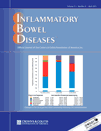Proteomic profiling of mucosal and submucosal colonic tissues yields protein signatures that differentiate the inflammatory colitides†
Presented, in part, at the 7th NIH-Network of Research Investigators, Bethesda, MD, April 23–24, 2009; at The American Gastroenterological Association Academic Skills Workshop, Phoenix, AZ, March 13–14, 2009; at The Annual Congress of The American Society of Colon and Rectal Surgeons, Hollywood, FL, May 2–6, 20096 (receiving the “New Jersey Society of Colon and Rectal Surgeons” award for the best basic science presentation); at the Annual Congress of Digestive Disease Week, Chicago, IL, May 30 to June 4, 20097; at the Annual Congress of Digestive Disease Week, New Orleans, LA, May 2–5, 20108; and at the Annual Congress of the American Society of Colon and Rectal Surgeons, Minneapolis, MN, May 15–19, 2010.9
Abstract
Background:
Differentiating ulcerative colitis (UC) from Crohn's colitis (CC) can be difficult and may lead to inaccurate diagnoses in up to 30% of inflammatory bowel disease (IBD) patients. Much of the diagnostic uncertainty arises from the overlap of clinical and histologic features. Matrix-assisted laser desorption/ionization mass spectrometry (MALDI-MS) permits a histology-directed cellular protein analysis of tissues. As a pilot study, we evaluated the ability of histology-directed MALDI-MS to determine the proteomic patterns for potential differences between CC and UC specimens.
Methods:
Mucosal and submucosal layers of CC and UC colon resection samples were analyzed after histologic assessment. To determine whether MALDI-MS would distinguish inflammation, the uninflamed (n = 21) versus inflamed submucosa (n = 22) were compared in UC and the uninflamed (n = 17) versus inflamed submucosa (n = 20) in CC. To determine whether there were proteomic differences between the colitides, the uninflamed UC submucosa (n = 21) was compared versus the uninflamed CC submucosa (n = 17), the inflamed UC submucosa (n = 22) was compared versus the inflamed CC submucosa (n = 20), and inflamed UC mucosa versus inflamed CC mucosa. Pairwise statistics comparisons of the subsets were performed.
Results:
Pairwise comparative analyses of the clinical groups allowed identifying subsets of features important for classification. Comparison of inflamed versus uninflamed CC submucosa showed two significant peaks: m/z 6445 (P = 0.0003) and 12692 (P = 0.003). In the case of inflamed versus uninflamed UC submucosa, several significant differentiating peaks were found, but classification was worse. Comparisons of the proteomic spectra of inflamed submucosa between UC and CC identified two discrete significant peaks: m/z 8773 (P = 0.006) and 9245 (P = 0.0009). Comparisons of the proteomic spectra of uninflamed submucosa between UC and CC identified three discrete significant peaks: m/z 2778 (P = 0.005), 9232 (P = 0.005), and 9519 (P = 0.005). No significantly different features were found between UC and CC inflamed mucosa.
Conclusions:
MALDI-MS was able to distinguish CC and UC specimens while profiling the colonic submucosa. Further analyses and protein identification of the differential protein peaks may aid in accurately diagnosing IBD and developing appropriate personalized therapies. (Inflamm Bowel Dis 2011;)




